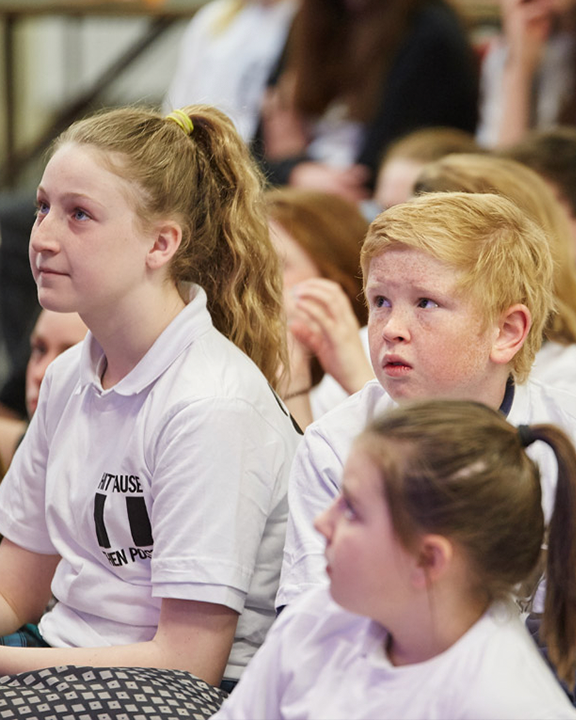
Term 3 has begun and if you’re already noticing that your students are experiencing a mental health slump, you’re not alone.
Through working with schools across the country, we get to see patterns in student behaviour. Usually in the middle of Term 3 we see what we like to call “The Mid-year Slump”, but this year we noticed the slump hit earlier than usual and it matched the stories we were hearing from PROJECT ROCKIT teachers.
So, what’s going on?
The Mid-year Slump
We know that student wellbeing has been significantly impacted by the COVID-19 pandemic and the return to in-person learning. With news outlets consistently reporting “unprecedented” stories weekly we’re seeing a correlation in poor student wellbeing like never before.
In addition to the above points, the mid-year drop in student wellbeing can also be attributed to:
- Stress and anxiety
- Follow-on from illness
- Inconsistency of routine
- The weather (specifically, Seasonal Affective Disorder )
What to look for in your classroom
You might have a sense that something is off with a handful of your students, but what are the recurring symptoms we see in young people?
- Disconnection from friend circle and wider peer community
- Difficulty understanding or progressing through schoolwork (i.e no motivation, confusion and withdrawn from class discussion)
- Acting out of character (i.e suddenly late, disorganised and has an attitude, or is uncharacteristically quiet and withdrawn)
- Signs of depression and/or anxiety
Our observations of students going through this slump is that there is also a significant impact on the collective cohort. The flow-on effects of a class of students experiencing a wellbeing slump can look like:
- Low morale
- An increase in interpersonal issues (sometimes between students who typically do not have them)
- An increase in cyberbullying and issues playing out in online spaces beyond your control
- Disconnection from school work, which flows on to low grades and falling behind
- Disconnection from the cohort and reduced empathy for one another
What can we do?
These effects are serious and can seem overwhelming. We hear from teachers all the time that they are just one person and these issues are on-top of a disrupted Semester 1. Where do you begin in trying to provide proactive support for your cohort?
Well, we’re here to let you know it is possible to support students during this crucial time.
We’re here to support you with your our Hot Tips for helping students navigate The Mid-Year Slump:
Hot Tip 1: Communicate avenues of support
The key here is to own the conversation about wellbeing. This means making sure we’re holding space to discuss wellbeing, mental health and seeking support regularly to build rapport with students.
This could look like:
- A class brainstorm about what support looks like for different symptoms and the ways we can support one another during these times
- An email to your students with tips for looking after themselves during this time, including avenues for additional support (i.e Kids Helpline and Lifeline )
- Checking in individually with students if you suspect they might be experiencing poor wellbeing
Hot Tip 2: Build out a routine
Semester 1 has been “unprecedented” when it comes to classroom disruptions, so you might feel like keeping a routine is impossible. Remember you set the tone with routine, and this can be as big or small as you like.
This can look like:
- A practical aid such as a visual schedule of the term so students can visualise the weeks ahead, no matter the interruptions
- Beginning and ending the week with the same check-in activity to give students a grounding moment
- Having a dedicated wellbeing dialogue with students where they can anticipate a space for discussion, proactive strategies and support channels. This can look like a regular meeting or activity
Hot tip 3: Adopt a proactive approach to wellbeing
This is a big one. In working with all kinds of schools, the ones who benefit the most in the long-run from wellbeing incursions are the ones who are dedicating proactive time for a holistic approach to wellbeing.
This could look like:
- Brainstorming with your students what ongoing support looks like for them and the kinds of resources they would like
- Getting additional support by working with a dedicated wellbeing incursion
- Regularly running activities for students to check-in with how they’re feeling and supporting them to create language around that.
Overcoming “The Slump”
The mid-year blues are very real, so if you are seeing any of the above behaviour know that you’re not alone. While peaks and troughs are a formative part of the school, and the human experience, being proactive and discussing our wellbeing is the key to creating a healthy culture of change where you can weather the lows in a more manageable way.
There are tangible ways we can support students to navigate this time and come out the other side. Let’s do it together.